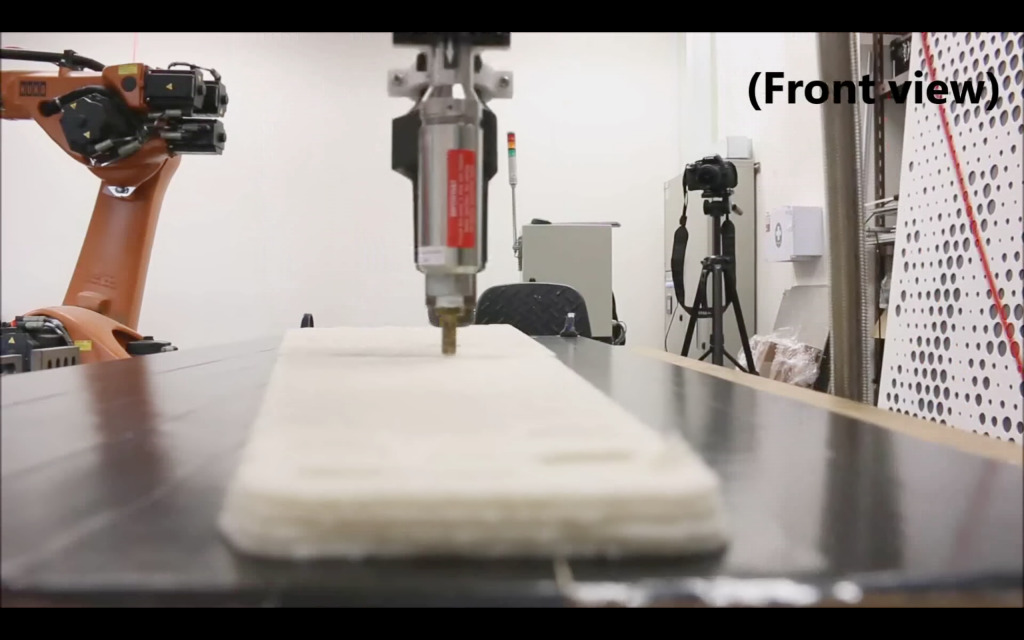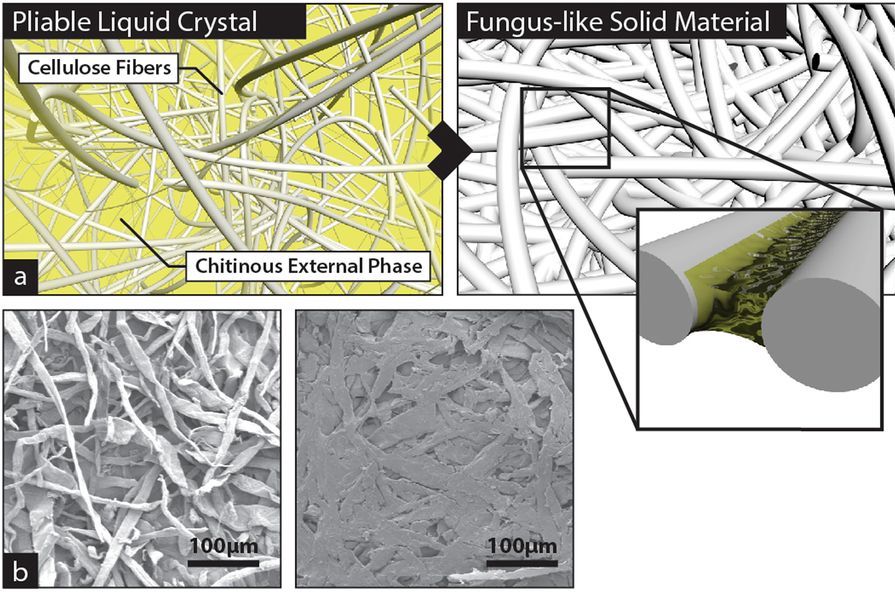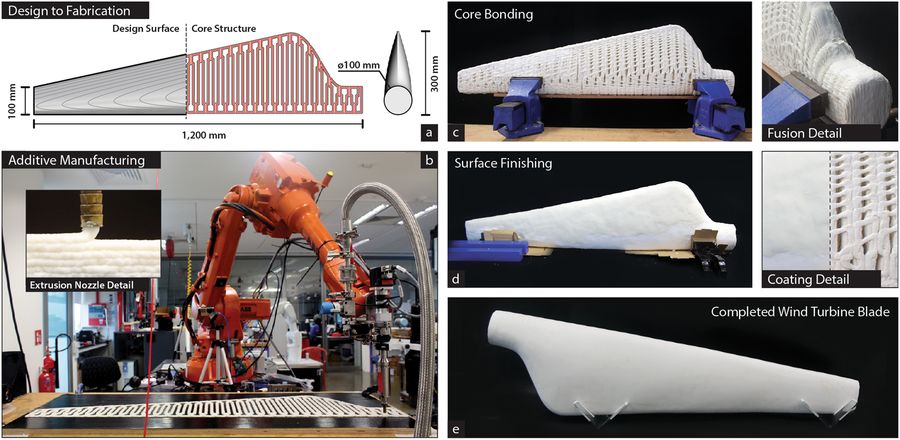Researchers at the Singapore University of Technology and Design (SUTD) have grown a 3D printable material that is cheap, lightweight, and, potentially, 100% sustainable.
The so-termed “Fungal-like adhesive material”, also known as FLAM, is made from a combination two of the most abundant molecules on earth: plant cellulose and chitin.
As a proof-of-concept, FLAM has been 3D printed to make a 1.2 meter long turbine blade.

Polymers that grow on trees (and prawns)
Cellulose is an organic compound that constitutes the main structural component of green plants. Chitin, a long-chain polymer, is the primary component of prawn exoskeletons and the cell was of fungi. As incredibly abundant and renewable materials, both substances present attractive alternatives to synthetically made polymers, particularly those made using fossil fuels, like ABS. A natural composition also makes chitin and cellulose a viable option in biomedical research.
By introducing controlled amounts of chitin between cellulose fibers, SUTD researchers managed to trigger a fungal-like development of the materials, making them stronger and easier to work with.

No organic solvents are used in the process, making FLAM production completely ecologically sustainable and repeatable in any laboratory. Furthermore, the material is producible at scale. To make enough FLAM to 3D print a turbine blade, SUTD scientists mixed cellulose and chitin in an industrial dough mixer.
A “catalyst” for truly environmentally friendly manufacturing
In a recently published study on FLAM production, SUTD prove how the biopolymer can be 3D printed on a large scale.
Loaded into an ABB robotic arm, the polymer was used to 3D print a 1.2 meter long turbine blade, weighing just 5.2kg. To make the blade smooth after printing, it was plastered in another layer of FLAM and polished.
“We believe this first large-scale additive manufacturing process with the most ubiquitous biological polymers on earth will be the catalyst for the transition to environmentally benign and circular manufacturing models,” explains SUTD Assistant Professor Javier Gomez Fernandez.

According to Fernandez, FLAM production is also “probably one of the most successful technological achievements in the field of bioinspired materials” to date.
The next step for the team is to seek industrial partners who can help bring FLAM to market.
Co-lead SUTD Assistant Professor Stylianos Dritsas, adds, “We believe the results reported here represent a turning point for global manufacturing with broader impact on multiple areas ranging from material science, environmental engineering, automation and the economy.”
An open article supporting this research, titled “Large-scale additive manufacturing with bioinspired cellulosic materials,” is published online in Science Reports journal. It is co-authored by Naresh D. Sanandiya, Yadunund Vijay, Marina Dimopoulou, Stylianos Dritsas and Javier G. Fernandez.
For more cutting edge materials research subscribe to the 3D Printing Industry newsletter, follow us on Twitter and like us on Facebook.
Sign up to 3D Printing Jobs to post and find new opportunities near you.
Featured image shows the SUTD 1.2m long turbine blade 3D printed out of cellulose and chitin. Photo via SUTD



